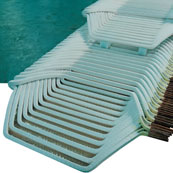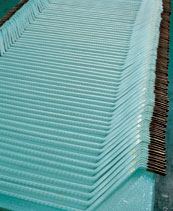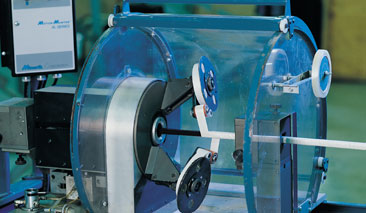VPI Coil Construction
 Vacuum Pressure Impregnation (VPI) insulation is recommended for motors that require sealing protection against severe duty contaminants.
Vacuum Pressure Impregnation (VPI) insulation is recommended for motors that require sealing protection against severe duty contaminants.
CMI’s VPI insulation system provides long-term motor protection for severe applications by resisting vibration, moisture, and other contaminants.
Additionally, they provide excellent heat transfer and a cooler running motor.
The CMI VPI Coil Construction Process
 Turn and strand insulation is selected so that each insulation system design will provide maximum motor up-time. Coils are wound using rectangular copper conductors insulated with a minimum of Quad enamel coatings, whenever possible. Some applications may require the use of single or double glass over film combinations or mica turn-taped construction.
Turn and strand insulation is selected so that each insulation system design will provide maximum motor up-time. Coils are wound using rectangular copper conductors insulated with a minimum of Quad enamel coatings, whenever possible. Some applications may require the use of single or double glass over film combinations or mica turn-taped construction.
Conductors are pressure bonded and sized to align the turns to provide a highly flexible but mechanically stable coil loop. The coils are then shaped to precise dimensions in a coil spreader. The VPI coil leads are then insulated either with VPI sleeving or with tape depending upon the application required.
Coil ground insulation consists entirely of VPI micamat tapes or a combination of tapes and slot wrappers followed by a Dacron glass or glass armor tape. Tapes and wrappers are composites of mica paper, polyester mat and glass cloth that ensures excellent absorption of VPI resins. Polyester felt lead seals are always installed at the point where the leads exit the coil. Multiple layers of these tapes and wrappers are used depending on voltage, motor application or specific customer requirements. After the coils are insulated, they are left untreated to allow the resin to penetrate and fill the insulation system during the VPI process.
Slot portions of coils with a rating of 6,600 volts and above are taped with a semiconducting tape. Each coil is then surge tested at values well above IEEE standards. Because of the use of VPI type mica tapes, reduced hi-pot testing should be performed.
